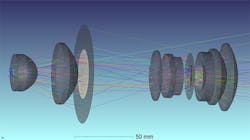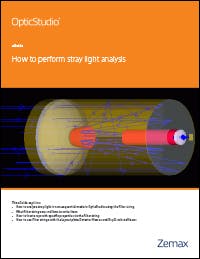Stray light analysis fuels innovation in VR, optical facial recognition, and more
Stray light analysis is critical in the development of many cutting-edge technologies including virtual reality (VR) and augmented reality (AR), heads-up displays, optical facial recognition, autonomous vehicles, drones, and more. Stray light, or light not intended in the design, comes from many different sources, complicating the optical product design process. It can be caused by reflections off the surface of a lens or imperfect mirror surfaces, light leaks, or light emitted by components of the system itself. Correcting for stray light can mean the difference between a successful product and going back to the drawing board.
Stray light analysis edges toward “mainstream”
The Hype Cycle from Gartner, a leading technology research company, is a graphical way to discern the hype surrounding new technologies from true commercial viability. The cycle includes five key phases of a technology's life cycle, represented as expectations over time, and includes: Innovation Trigger, Peak of Inflated Expectations, Trough of Disillusionment, Slope of Enlightenment, and Plateau of Productivity. Applying the Hype Cycle to the optics industry, it could be said that stray light analysis has reached the final phase where mainstream adoption starts to take off.
When optimization and tolerancing tools were first introduced, engineers were fearful that they'd have nothing to do if the software was doing it for them. But it was the opposite: The software enabled them to produce better designs and freed up time for them to innovate. Stray light analysis will do the same, particularly as more and more teams are embracing tools to predict and correct stray light early in the design process.
Detecting stray light early in the design process
OpticStudio from Zemax takes stray light analysis to the next level, giving optical engineers tools to not only detect stray light, but to correct it early in the design process—saving time and money.
What used to be a huge problem for experts who needed massive computational processing power is now a task that can be handled by any smart engineer with a desktop computer. With software like OpticStudio, stray light analysis will continue to be refined and become faster and easier, helping to fuel innovation in AR/VR, automotive, aerospace, defense, biomedical, consumer electronics, displays, life sciences, semiconductors, and vision systems.
eGuide: How to perform stray light analysis
Stray light analysis is critical for understanding the performance of an optical design. Learn how to perform stray light analysis in OpticStudio using Filter Strings.


